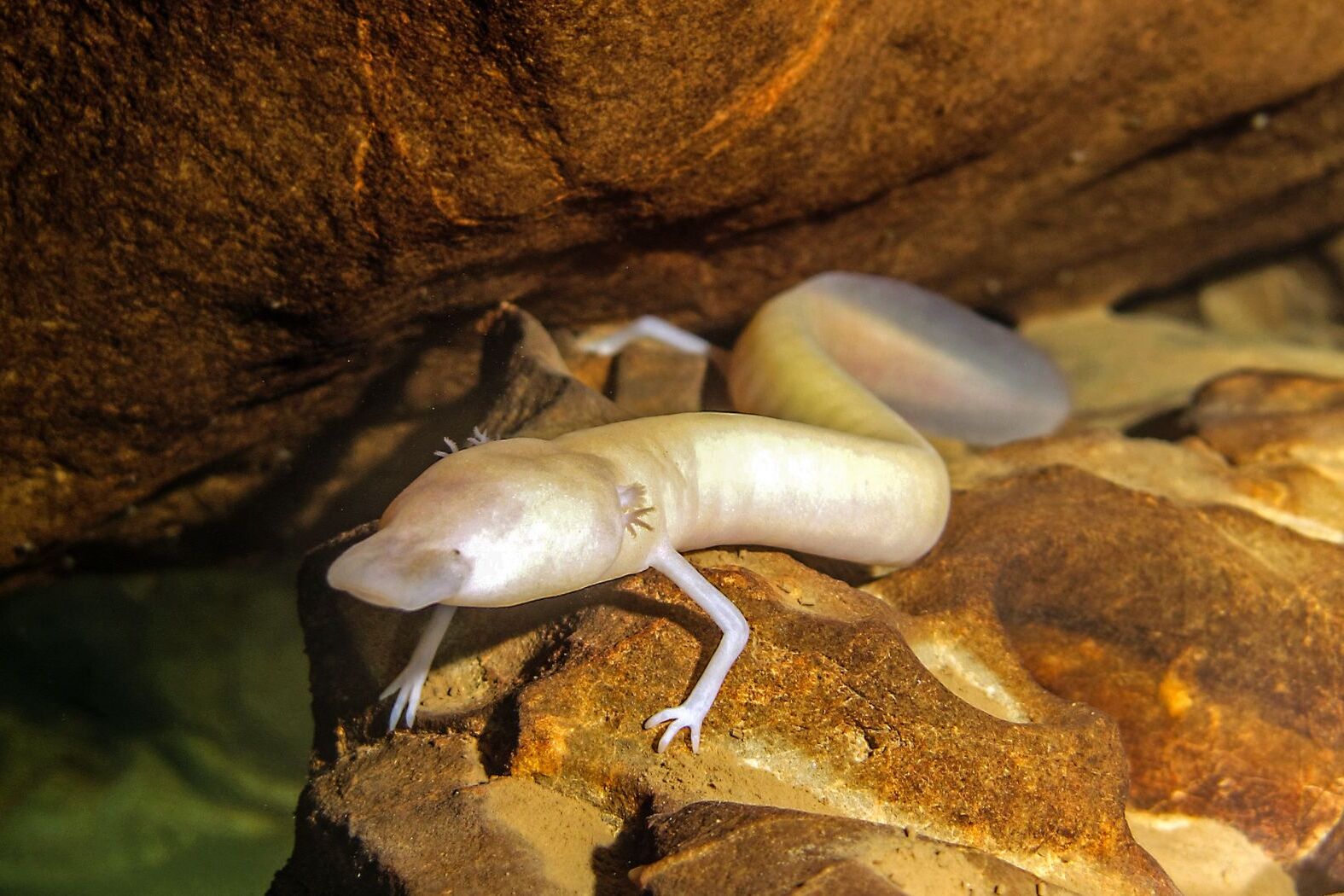
Did you know the Olm Salamander can live up to 100 years? This fascinating creature, also known as the "human fish," thrives in the dark caves of Europe. Unlike most amphibians, the Olm is blind and relies on other senses to navigate its subterranean world. Its pale, almost ghostly appearance adds to its mystique. These salamanders can go without food for up to a decade, making them true survival experts. They breathe through both lungs and gills, a rare trait among their kind. Intrigued yet? Let's dive into 34 more amazing facts about this extraordinary amphibian!
Key Takeaways:
- The Olm Salamander, also known as the "human fish," is a blind amphibian with unique adaptations, such as living up to 100 years and surviving without food for 10 years.
- Conservation efforts are crucial to protect the Olm Salamander from threats like habitat destruction and pollution, as it is classified as vulnerable by the IUCN.
What is an Olm Salamander?
The Olm Salamander, also known as the proteus or cave salamander, is a fascinating creature that has intrigued scientists and nature enthusiasts alike. Let's dive into some intriguing facts about this unique amphibian.
-
The Olm Salamander is a blind amphibian that lives in the dark caves of Central and Southeastern Europe.
-
It has adapted to its dark habitat by losing its pigmentation, resulting in a pale, almost ghostly appearance.
-
Despite being blind, the Olm has highly developed senses of hearing and smell, which help it navigate and find food.
-
The Olm can live up to 100 years, making it one of the longest-living amphibians.
-
It can survive without food for up to 10 years, thanks to its low metabolism and ability to store nutrients.
Unique Adaptations of the Olm Salamander
The Olm Salamander has evolved several unique adaptations to thrive in its subterranean environment. These adaptations make it a remarkable example of evolutionary biology.
-
The Olm has external gills, which allow it to extract oxygen from the water in its cave habitat.
-
It has a highly sensitive lateral line system, which detects vibrations and movements in the water.
-
Unlike most amphibians, the Olm retains its larval features throughout its life, a condition known as neoteny.
-
Its skin is covered in mucus, which helps protect it from bacteria and other pathogens in its environment.
-
The Olm's eyes are underdeveloped and covered by skin, rendering it completely blind.
Habitat and Distribution
Understanding the habitat and distribution of the Olm Salamander can provide insights into its unique lifestyle and survival strategies.
-
The Olm is primarily found in the Dinaric Alps, a mountain range in Southeastern Europe.
-
It inhabits underwater caves and karst systems, which are characterized by limestone and dolomite formations.
-
The Olm's habitat is often isolated and difficult to access, making it challenging for researchers to study.
-
It prefers water temperatures between 5 and 15 degrees Celsius, which are typical of its cave environment.
-
The Olm's distribution is limited to a few regions, making it a rare and vulnerable species.
Reproduction and Lifespan
The reproductive habits and lifespan of the Olm Salamander are as unique as the creature itself. These aspects of its biology contribute to its mystique.
-
The Olm reaches sexual maturity at around 15 years of age, which is relatively late compared to other amphibians.
-
It reproduces through internal fertilization, with the female laying eggs in secluded areas of the cave.
-
The Olm's eggs take several months to hatch, and the larvae resemble miniature adults.
-
It has a low reproductive rate, with females laying only a few eggs at a time.
-
The Olm's long lifespan and low reproductive rate make it vulnerable to environmental changes and human activities.
Conservation Status
The Olm Salamander faces several threats that have led to its current conservation status. Efforts are being made to protect this unique species and its habitat.
-
The Olm is classified as vulnerable by the International Union for Conservation of Nature (IUCN).
-
Habitat destruction, pollution, and climate change are major threats to the Olm's survival.
-
Conservation efforts include habitat protection, pollution control, and captive breeding programs.
-
Public awareness campaigns aim to educate people about the importance of preserving the Olm and its habitat.
-
Researchers are studying the Olm's genetics and biology to better understand its needs and develop effective conservation strategies.
Interesting Facts About the Olm Salamander
Beyond its biology and conservation status, the Olm Salamander has several interesting traits that make it a subject of fascination.
-
The Olm is sometimes referred to as the "human fish" due to its pale skin and elongated body.
-
It has been a subject of folklore and mythology in the regions where it is found.
-
The Olm's ability to regenerate lost limbs has intrigued scientists studying regenerative medicine.
-
It is one of the few amphibians that can vocalize, producing sounds that are thought to be used for communication.
-
The Olm's diet consists mainly of small invertebrates, such as insects, snails, and worms.
Scientific Research and Discoveries
Ongoing scientific research continues to uncover new information about the Olm Salamander, shedding light on its mysterious life.
-
Genetic studies have revealed that there are several distinct populations of Olms, each with unique genetic traits.
-
Researchers have discovered that the Olm's immune system is highly specialized, allowing it to survive in its unique environment.
-
Studies on the Olm's sensory systems have provided insights into how animals adapt to life in complete darkness.
-
The Olm's ability to survive long periods without food has led to research on its metabolism and energy storage mechanisms.
Final Thoughts on the Olm Salamander
The olm salamander is a fascinating creature with unique traits. Living in dark caves, this blind amphibian has adapted to its environment in remarkable ways. Its ability to live up to 100 years and survive without food for a decade showcases its resilience. The olm's keen sense of smell and hearing compensates for its lack of vision, making it a master of its subterranean world.
Understanding the olm salamander helps us appreciate the diversity of life on Earth. These creatures remind us of nature's adaptability and the importance of preserving unique habitats. As we learn more about them, we gain insights into evolution and survival strategies.
So, next time you think about amphibians, remember the olm salamander. Its story is a testament to the wonders of nature and the incredible ways life can thrive in the most unexpected places.
Frequently Asked Questions
Was this page helpful?
Our commitment to delivering trustworthy and engaging content is at the heart of what we do. Each fact on our site is contributed by real users like you, bringing a wealth of diverse insights and information. To ensure the highest standards of accuracy and reliability, our dedicated editors meticulously review each submission. This process guarantees that the facts we share are not only fascinating but also credible. Trust in our commitment to quality and authenticity as you explore and learn with us.


